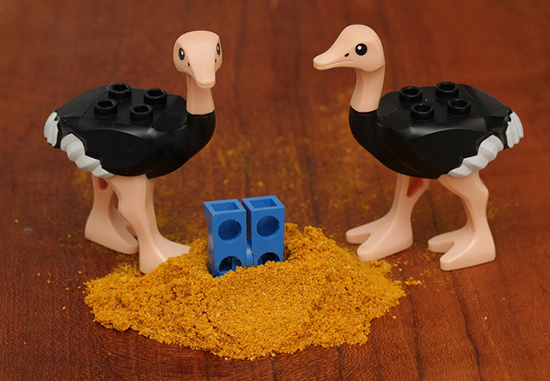
Australia has the most concentrated press ownership in the world. What does that mean for significant issues such as climate change? In 2011 and 2012 the Australian Centre for Independent Journalism at University of Technology, Sydney collected data on climate science coverage in 10 Australian newspapers, reports Professor Wendy Bacon for The Conversation.
INVESTIGATION: The Australian Centre for Independent Journalism at the University of Technology, Sydney, has found in a new report - Sceptical Climate: Part 2 - that Australia’s concentrated newspaper ownership has a significant effect on how climate science is covered. One third of articles in Australia’s major newspapers do not accept the consensus position of climate science: that human beings are contributing to climate change.
That’s a very high level of scepticism when you consider that these stories are rejecting findings that over 97 percent of the world’s climate scientists support. Recently the International Panel on Climate Change found there was 95 percent certainty that people were contributing to climate change.
How did we decide what was sceptical?
The core of the study was a content analysis of all articles in 10 major Australian newspapers between February and April in 2011 and 2012. We found 602 articles referred to climate science in total, with a 20 pecent drop from 2011 to 2012.
But how did we decide what was sceptical, and what was not?
We measured scepticism as the articles that rejected the scientific consensus position of climate science: that humans are contributing to climate change. To start with we asked: does the article agree or disagree with the consensus position?
We later realised this was too simplistic, and created four categories for articles:
Accepted: these articles communicated acceptance of the consensus position either explicitly or implicitly.
Rejected: these articles outright rejected the consensus scientific position on anthropogenic global warming, for example, by calling it a hoax.
Suggested doubt: these articles communicated doubt by suggesting, for example, that there was insufficient evidence for, or substantial debate in the scientific community about the existence of anthropogenic global warming.
Unable to discern: we weren’t able to allocate the article to one of the other categories (very small number of articles).
The level of scepticism was then measured as a proportion of the articles that “rejected” or “suggested doubt” about the consensus position.
What were the major findings?
As with most content analysis, we had to explore deeper to see where the real problem lies. We looked at circulation, ownership, and genre of articles.
Australia’s two biggest newspapers by circulation, News Corp’s Daily Telegraph and Herald Sun, were more than 60 percent sceptical about anthropogenic climate change.
Australia’s largest circulation newspaper, the Herald Sun, is its most sceptical. 67 percent of the paper’s coverage of climate science did not accept the scientific consensus.
When we look further at ownership, we can start to map out the landscape of scepticism in Australia.
Fairfax Media, owners of The Age and Sydney Morning Herald accepts the consensus position and published very few articles that communicated doubt about anthropogenic climate change. While the West Australian had a very low amount of coverage, it was also not sceptical.
Five News Corporation publications, The Australian (48 percent of coverage was sceptical), Daily Telegraph (63 percent), Herald Sun (67 percent), Adelaide Advertiser (28 pecent) and the NT News (42 percen) accounted for most of the scepticism. The other two News Corp papers The Mercury and The Courier Mail were not sceptical.
While the News Corp tabloids tend to outright reject the consensus, the national newspaper The Australian is more likely to suggest that climate science is a matter of debate.
We can also break down the figures by genre of articles. News Corp produced a much higher proportion (51 percent) of comment articles on climate science than Fairfax (27 pecent). In the Herald Sun 97 percent of comment articles were sceptical.
This is largely due to Herald Sun columnist Andrew Bolt, who wrote over half of all the words on climate science in the paper. Bolt plays a significant and strategic role in the production of climate scepticism in Australia and is syndicated in metropolitan and regional publications around Australia. He is heard almost daily on Sydney’s right wing radio station 2GB and presents The Bolt Report on Channel 10.
So what does this mean?
As Tom Morton the director of the Australian Centre for Independent Journalism, which published the study, said yesterday:
If you believe that the main obligation of journalists is to the public right to know, the results of this study are truly alarming. Journalism is about reporting contemporary events as accurately as possible. There could be no better example of the importance of this than the reporting of climate science.
Readers of sceptical papers receive almost no information that would enable them to understand the complexities or likely impacts of climate change domestically or internationally. The research findings of climate scientists are largely rendered invisible for News Corp audiences. Its tabloid publications produce no critique of the sceptic position.
News Corp’s coverage seems to be more about production of ignorance than informing people so they can participate in debates about solutions. If people are confused or ignorant about potential threats, they cannot be expected to support action to confront them.
It is not surprising therefore that levels of acceptance of anthropogenic climate change have dropped in Australia, where we have the highest emissions per person in the world. The public is paying a heavy price for having News Corp as the dominant player in the most concentrated press in the developed world.
Sceptical Climate: Part 2 is the second part in a research project from the Australian Centre for Independent Journalism. You can read about the first part on newspapers and climate policy here. This article was first published in The Conversation.



